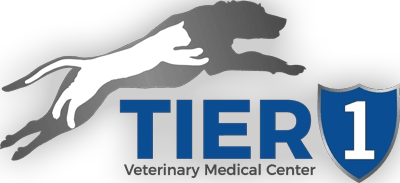Advanced Imaging
Tier 1 stays on the cutting edge of technological
advancements for diagnosis and treatment.
CT Scans
A computed tomography (CT) scan is a series of x-rays taken through an organ or region of the body. A single x-ray can only show us a 2D picture and may leave out vital details. By taking multiple x-rays or ‘slices’ through the area of interest, we can reconstruct a 3D image for more complete evaluation.
CT scans allow us to see areas that are otherwise hard to visualize, including the nasal cavity, skull, or muscular tissue. They are particularly valuable for cancer patients to determine the precise location of a tumor and plan surgical intervention. Contrast dyes are frequently used with CT to help enhance the appearance of abnormal tissue.
Fluoroscopy
Fluoroscopy is another valuable imaging technique available at Tier 1. A single x-ray only provides a brief snapshot of an organ in motion. Important functional abnormalities may be missed. A fluoroscopy machine takes a continuous series of x-ray pictures to produce video of a moving structure. It is most commonly used to diagnose diseases of the airway, esophagus, urinary tract, and vascular system.
Fluoroscopy can be used with contrast dyes for real-time evaluation of swallowing disorders or urinary problems. Using fluoroscopy, we can perform minimally-invasive therapeutic procedures such as stent placement for tracheal collapse. In addition, fluoroscopy can be used for guided bone biopsies, precise nerve and joint injections, and guided delivery of Stem Cell and platelet-rich plasma (PRP) therapy.
CT vs. MRI
Making the decision between CT and MRI can be daunting and will not always be a straightforward answer. It is best to understand which modality will give you the best results for your patient. While CT is better at imaging bone and lungs, MRI provides exceptional soft tissue contrast. Other differences to consider are time to obtain images and cost. The length of time to do a CT is much shorter than an MRI and there are certain cases where a CT can be done under sedation instead of anesthesia. Furthermore, due to the intricate instrumentation needed for MRI imaging, it is more costly than CT.
Here are a few examples to help decide between CT and MRI:
- Seizures
- CNS diseases
- Spinal cord disease
- Fibrocartilaginous embolism
- Malignancy of liver tumors
- Muscle tears and strains
- Cranial cruciate rupture
- Thoracic disease
- Abdominal disease
- Chronic otitis
- Elbow dysplasia
- Nasal disease
- Head trauma
